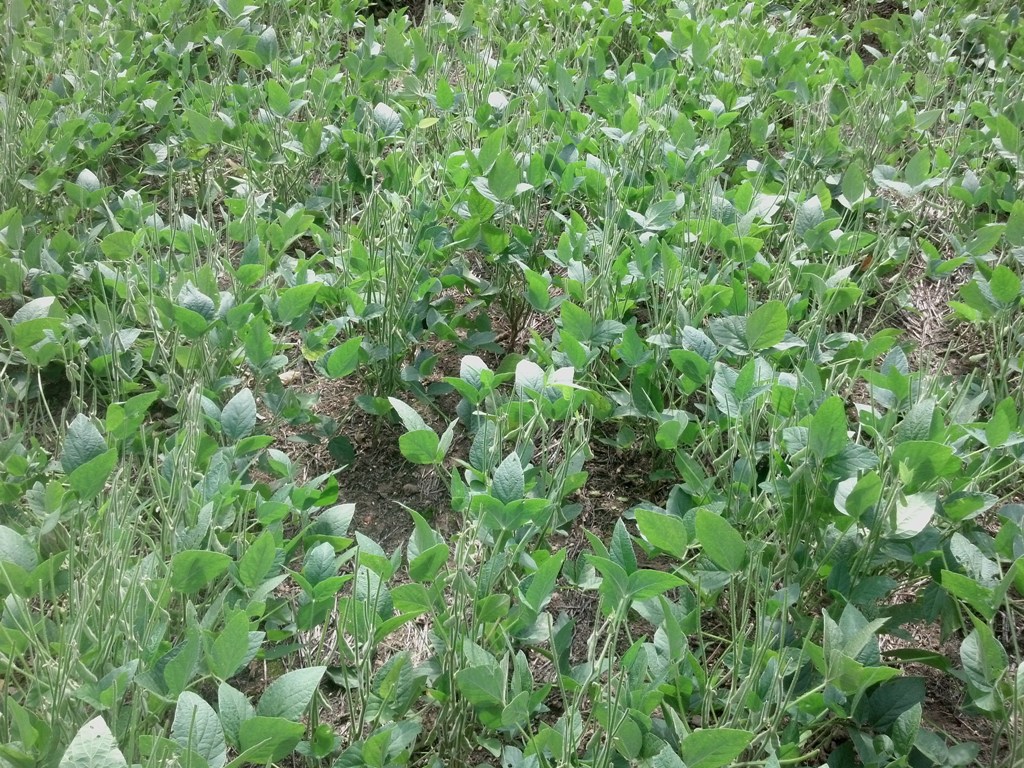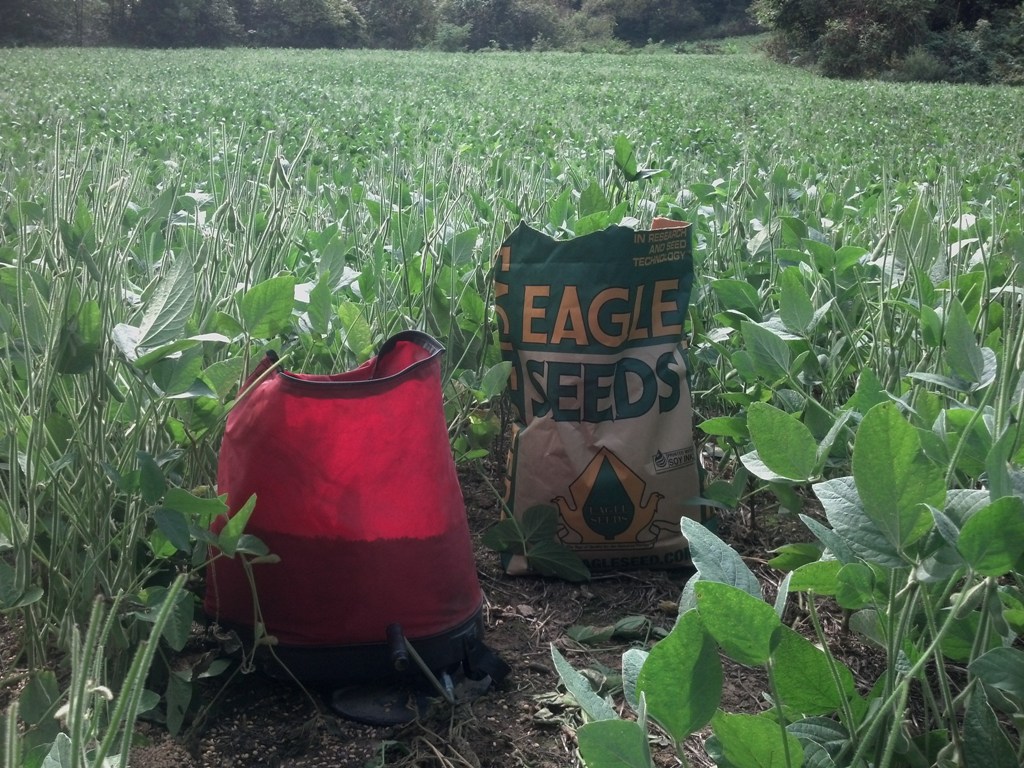Sweetening the Plot!
Filed under: Food Plots, Hunting Blog
There is an 80% chance of rain for Friday so I did one of my favorite activities this morning!  I broadcast some Broadside fall food plot blend into existing soybean plots. In a couple of the smaller food plots here at The Proving Grounds the deer have browsed the soybeans so aggressively that 30-50% of the soil is exposed to the sun. Deer are still using these food plots so there’s probably 2,000+ pounds of quality forage in these plots per acre.
I broadcast some Broadside fall food plot blend into existing soybean plots. In a couple of the smaller food plots here at The Proving Grounds the deer have browsed the soybeans so aggressively that 30-50% of the soil is exposed to the sun. Deer are still using these food plots so there’s probably 2,000+ pounds of quality forage in these plots per acre.
I don’t want to destroy the existing soybeans. They are attracting and benefiting the deer. In fact, I may hunt over one of these plots soon. However, the soybeans in these plots won’t make enough pods to feed deer during the late winter. Therefore the table in these locations will be cleaned and deer will feel unwelcome and probably go somewhere else to eat (maybe other properties).
Rather than clean the table, I simply start serving the next meal. I walked through the plots and broadcast the Broadside blend with a hand operated spreader. The wheat, brassicas, and radishes will germinate rapidly if it rains as forecast. The special soybeans in the blend are bred to germinate and grow quickly. These beans won’t survive after the first hard frost, but are an incredible tasty appetizer to keep the deer feeding in this plot until the radishes, wheat, and brassicas are large enough.
This plan keeps the deer foraging in the plot without interruption and provides quality nutrition until spring when I’ll plant Eagle Seed forage soybeans again.
There’s another advantage that food plot farmers rarely talk about. Keeping forage growing year round drastically reduces erosion and nutrient losses to leaching (fertilizer leaching too deep in the soil for plants to use). Radishes and turnips are very good at “mining” nutrients. That is to say they capture nutrients in the deep roots and bring them back to the surface. Either deer consume the nutrients (the purpose of the plot) or the big bulbs rot and provide them at the surface for the next crop.
This is the system that kept the great prairies extremely fertile for centuries! It’s an inexpensive and natural way to provide quality forage for deer at your proving grounds.
Growing and hunting deer together.
Grant





